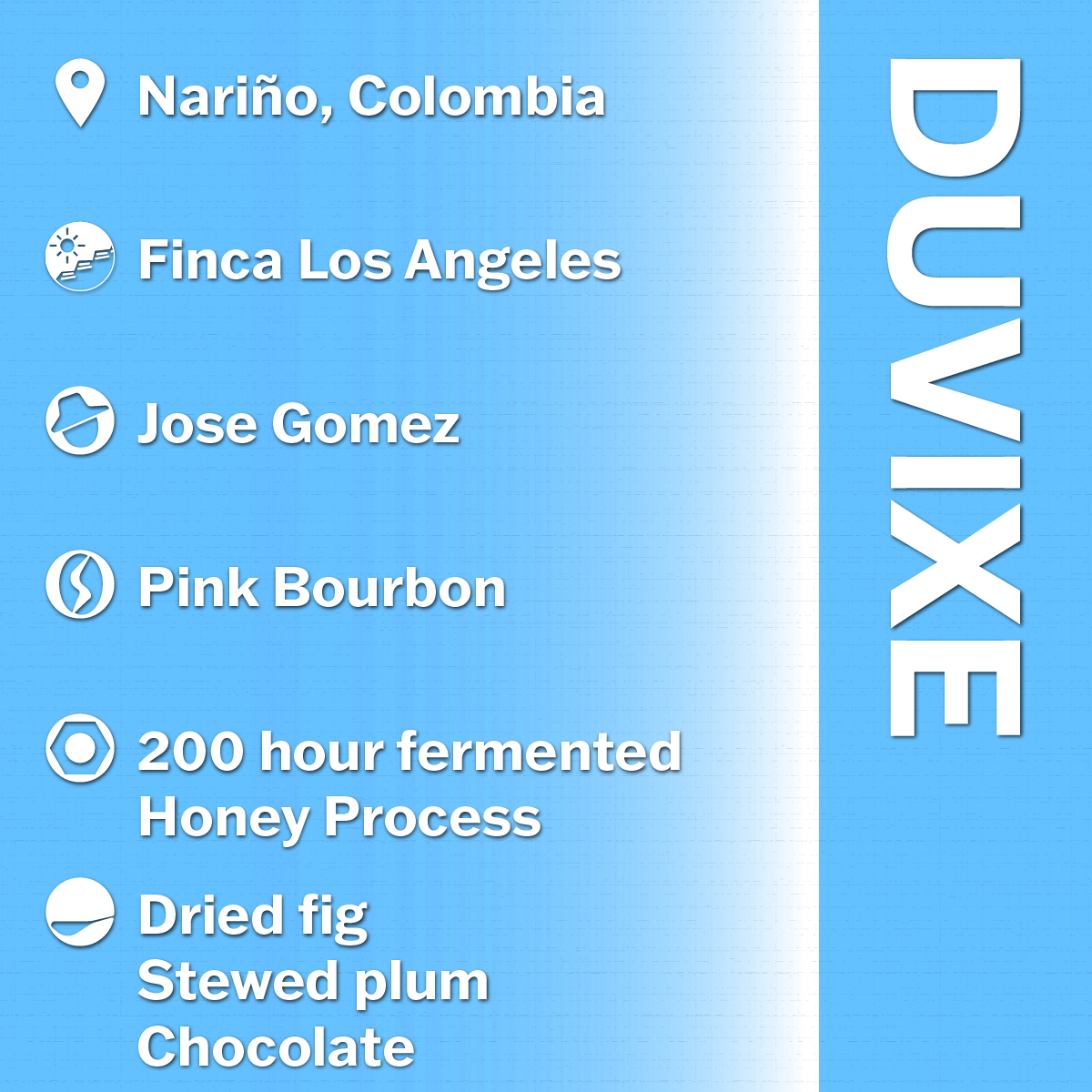 Image 1 of
Image 1 of


Jose Gomez - Pink Bourbon
DUVIXE – purple fruit characteristics with notes of black tea and dried fruits
Farm // Finca los Angeles
Farmer // Jose Gomez
Varietal(s) // Pink Bourbon
Altitude // 1850 masl
Fermentation // 120 hours in tank, 80 hours open tank
Drying method // Honey process
Drying time // 18 days
DUVIXE – purple fruit characteristics with notes of black tea and dried fruits
Farm // Finca los Angeles
Farmer // Jose Gomez
Varietal(s) // Pink Bourbon
Altitude // 1850 masl
Fermentation // 120 hours in tank, 80 hours open tank
Drying method // Honey process
Drying time // 18 days
DUVIXE – purple fruit characteristics with notes of black tea and dried fruits
Farm // Finca los Angeles
Farmer // Jose Gomez
Varietal(s) // Pink Bourbon
Altitude // 1850 masl
Fermentation // 120 hours in tank, 80 hours open tank
Drying method // Honey process
Drying time // 18 days

About:
Finca Los Angeles is a one-hectare gem nestled just outside Buesaco in the highlands of Nariño. It’s not just a farm, it’s a family-led project grounded in hope, vision, and meticulous care. José Gomez, the producer behind this lot, is cultivating more than just coffee; he’s creating a connection—between his family and the future, and between his terroir and the world. Although the farm itself is modest in size, José brings precision and intentionality to every stage of production. With a growing collection of over 3,000 Geisha trees and a deep respect for clean, terroir-driven profiles, he’s carving out a name for himself in Colombia’s specialty coffee scene.
Process:
The process of this Pink Bourbon begins with hand-picking, where only cherries at peak ripeness are selected. After harvest, the cherries are floated in water to sort by density, ensuring only the highest quality beans move forward. These cherries are then carefully washed with sanitized water and drained in preparation for fermentation. The first stage of fermentation happens in sealed polyethylene tanks, where the whole cherries rest in a dry environment for 120 hours. These tanks are equipped with valves for sampling and are closely monitored every 12 hours for pH, Brix, and temperature. Once this controlled sealed in tank fermentation stage is complete, the coffee is depulped and transferred to an open-air environment, where it undergoes an additional 60 hours of oxidation. This stage allows further flavour development, guided by ambient conditions and oxygen exposure. Finally, the coffee is dried using a hybrid system that combines solar energy with low-temperature mechanical drying, powered by by-products from earlier stages, for approximately 18 days, until the beans reach a stable moisture content of 10.5%.
